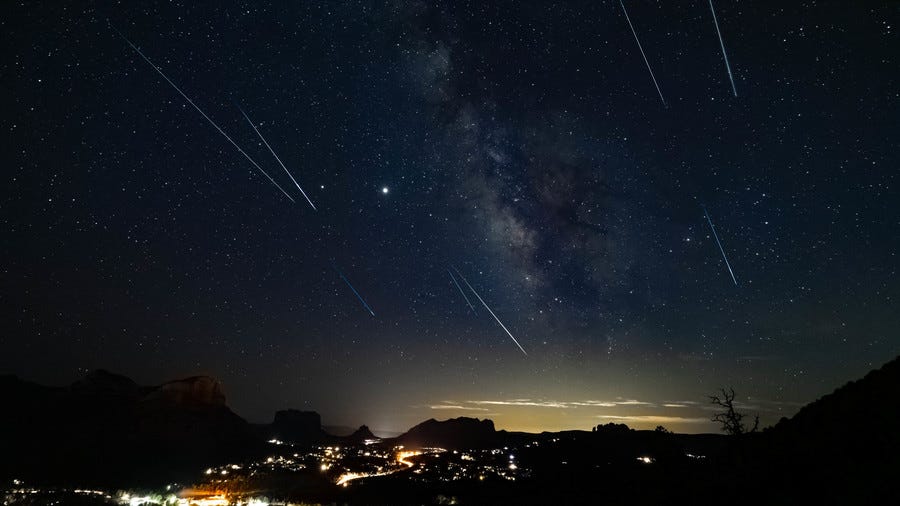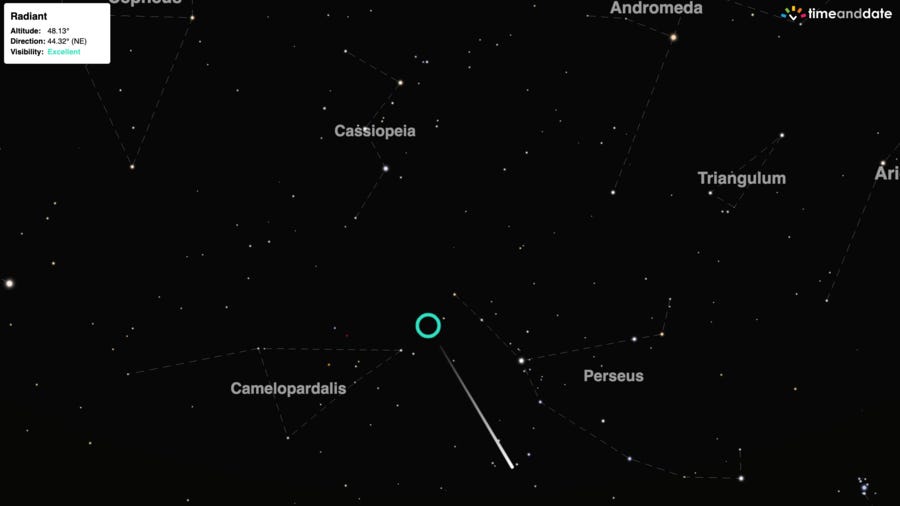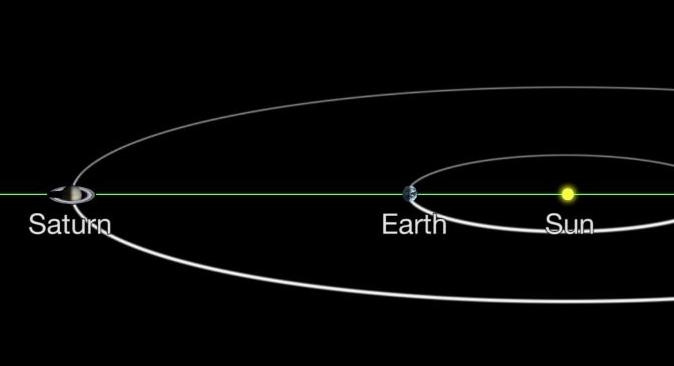Celestial Events in August 2023
Much anticipated are Perseids meteor show and Saturn at opposition
August is a month filled with celestial wonders, offering stargazers and astronomy enthusiasts an array of captivating events to behold in the night sky. From dazzling meteor showers to the grandeur of the planets, the eighth month of the year provides a celestial spectacle for everyone to enjoy. Let's explore some of the remarkable events that grace the night sky in August.
Perseids Meteor Shower: A Show of Shooting Stars
The Perseids meteor shower is one of the most popular and anticipated annual celestial events for skywatchers around the world. It occurs every year in late July to mid-August, with its peak typically observed around August 11th to 13th. This year it peaks on 12th – 13th August. This meteor shower is known for its impressive display of bright, fast-moving meteors, often referred to as "shooting stars."

The Perseids meteor shower is caused by the Earth passing through the debris left behind by Comet 109P/Swift-Tuttle. This comet, discovered in 1862, has a highly elliptical orbit that takes it around the Sun roughly once every 133 years. As the comet gets closer to the Sun during its orbit, it heats up, releasing dust and small rocky particles into space. Over time, these particles spread along the comet's path, forming a vast trail of debris.
When the Earth intersects this debris trail, the particles enter our planet's atmosphere at high speeds. As they burn up due to friction with the air, they create bright streaks of light, giving rise to the Perseids meteor shower.

The Perseids meteor shower is best observed during its peak nights, which usually occur when the constellation of Perseus, from which the meteor shower gets its name, is highest in the sky. These meteor showers are visible from both the northern and southern hemispheres, with better visibility in the Northern Hemisphere due to the radiant point (the apparent origin of the meteors) being higher in the sky.
To view the Perseids, find a location away from city lights with an unobstructed view of the night sky. Allow your eyes to adjust to the darkness for about 20 minutes to increase visibility. No telescopes or binoculars are required; simply lie down or sit in a comfortable position and gaze up at the sky. The Perseids are known for their bright and fast meteors, and on peak nights, you might see dozens of meteors per hour.
The Perseids meteor shower stands out for several reasons:
Abundance: The Perseids are one of the most active meteor showers, producing a high number of meteors during its peak, which can sometimes exceed 100 meteors per hour.
Brightness: Many Perseids meteors are exceptionally bright and leave long-lasting trails, making them particularly captivating to observe.
Summer Display: The Perseids occur during the warm summer months in the Northern Hemisphere, making it a popular event for families and casual stargazers to enjoy.
Accessibility: Unlike some other meteor showers that may occur at inconvenient times, the Perseids' peak nights often fall on weekends, making it easier for people to stay up late and witness the spectacle.
Saturn at Opposition: Gas Giant Planet up for Display

Saturn at opposition is a fascinating astronomical event that occurs when the planet Saturn is in direct alignment with the Earth and the Sun. This year it is happening on 27th August. During this event, Saturn is on the opposite side of the Earth from the Sun, appearing at its brightest and closest point to our planet. Saturn at opposition provides an excellent opportunity for skywatchers and amateur astronomers to observe and study this magnificent ringed planet.
Key Features of Saturn at Opposition:
Brightness: Saturn is already one of the most prominent objects in the night sky due to its size and distinctive ring system. However, during opposition, it becomes even more luminous and can outshine many of the nearby stars. It is one of the brightest objects visible in the sky, easily recognizable even to the unaided eye.
Closest Approach: Saturn at opposition is the point in its orbit when it is closest to the Earth. This proximity allows telescopic observers to see more details on the planet's surface and rings, making it an ideal time for astrophotography and visual observation.
Full Phase: During opposition, Saturn exhibits a full phase, similar to the Moon during a full moon. This means that the entire illuminated hemisphere of Saturn is facing the Earth, providing a complete view of the planet and its iconic ring system.
Ring Visibility: Saturn's ring system is one of its most distinctive and captivating features. During opposition, the rings are tilted at their maximum angle, providing an impressive and stunning view through telescopes. The rings' visibility and brightness are at their peak during this time.

As evening falls in August 26, 2023, watch for bright golden Saturn just above the southeastern horizon. Saturn’s opposition, when we fly between Saturn and the sun, is at 8 UTC on August 27 (3 a.m. CDT). So it’s in a wonderful place to see now, ascending in the east in the evening, as seen from around the globe. Saturn at opposition is in the dim constellation Aquarius the Water Bearer. In addition, if you have a dark sky, you can see the dim, but pretty constellation Capricornus the Sea-goat. It has the shape of an arrowhead. Indeed, you can see them crossing the sky all night, traveling along the ecliptic, the same path the sun travels during the day. Also, the bright star Fomalhaut is nearby.
To observe Saturn at opposition, you don't need sophisticated equipment; a simple pair of binoculars can reveal the planet's beautiful rings. However, for a more detailed view, using a telescope with moderate magnification will provide an awe-inspiring sight of Saturn's rings and its largest moon, Titan.
Apart from the above two, one can also look out for the Full Moon, Supermoon, Blue Moon on 31st August. (Side note: A Blue Moon refers to the second Full Moon that occurs within a calendar month., A Supermoon, scientifically known as a Perigee Full Moon, happens when the Full Moon coincides with the Moon's closest approach to Earth in its elliptical orbit. The Moon appears larger and brighter in the night sky compared to an average Full Moon)
Embrace the opportunity to look up and witness the wonders of the cosmos during August's celestial events. Whether you're a seasoned astronomer or a casual skywatcher, these mesmerizing displays serve as a reminder of the vastness and splendor of the universe that surrounds us. So, grab your telescope or just lie back under the stars, and let the celestial splendors of August leave you with a sense of wonder and cosmic perspective.



